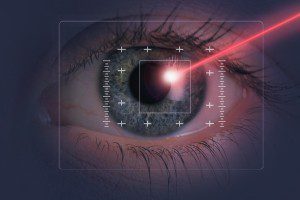LASIK Eye Surgery
-
Medically Reviewed by Joseph Christenbury, M.D. | Last updated 10/17/2023
- Overview
Overview
What is LASIK?
LASIK stands for Laser-Assisted In Situ Keratomileusis. It is a popular surgical procedure used to correct common vision problems such as nearsightedness (myopia), farsightedness (hyperopia), and astigmatism.
Topics covered on this page
- Cost of LASIK surgery
- Is the cost covered by insurance?
- Are you a candidate?
- How does LASIK work?
- Procedure overview
- Recovery time
- When will vision improve?
- How long will results last?
Cost of LASIK surgery
The average cost of LASIK surgery is between $1,500 to $4,000 per eye. There are several factors that can influence the cost of your procedure, such as:
- Your Ophthalmologist: The experience and reputation of the LASIK surgeon performing your procedure can make a difference. Highly skilled ophthalmologists often charge a premium for their services.
- Location Matters: The cost of living and the average pricing for medical services in urban areas tend to have higher pricing than rural.
- Technology: Providers using advanced lasers and equipment may charge higher fees to cover the cost of these technologies.
- Pre & Postoperative Care: The care provided before and after affects the overall cost. This includes consultations, tests, prescription medications, and follow-up appointments.
- Special Promotions: Some LASIK providers may offer special promotions that include discounted rates if you schedule your procedure within a specified time-frame.
To get an accurate quote, set up a consultation with an experienced ophthalmologist to get an estimate based on your individual circumstances.
Is the cost covered by insurance?
LASIK is typically considered an elective procedure for vision correction, and most health insurance plans do not provide coverage for it. Insurance companies generally classify LASIK as a cosmetic or refractive surgery, rather than a medically necessary procedure. As a result, they often exclude coverage for LASIK or similar vision correction surgeries from their policies.
Certain insurance plans, especially those from specific employers or vision insurance companies, might include partial coverage or special discounts for LASIK as part of their improved vision benefits. To find out if LASIK is covered or if you’re eligible for any discounts, it’s a good idea to carefully review your insurance policy or get in touch directly with your insurance provider. They can give you all the details about LASIK coverage and potential savings.
Furthermore, some flexible spending accounts (FSAs) or health savings accounts (HSAs) may allow you to use pre-tax funds to cover LASIK expenses. These accounts are typically offered through employers and can be used for qualified medical expenses, including some vision correction procedures.
Contact your insurance provider directly to understand the specifics of your coverage and any potential reimbursement options for LASIK.
Are you a candidate?

- A prescription that has changed in the last year
- Uncontrolled diabetes
- Pregnant or nursing
- Use high dose steroids
- Cornea abnormalities
- Thin cornea
- Dry eye
- Cataract
- Uncontrolled glaucoma
- An autoimmune disease or any disease that can result in slow wound healing
- A higher risk of head trauma due to an active lifestyle
Before surgery, your eye doctor will go over your medical history and take measurements of your cornea, your pupil and your refractive error to determine your eligibility for the procedure.
You will be asked to stop wearing soft contact lenses 1 to 2 weeks and hard lenses 3 to 4 weeks before the procedure so that your doctor can get the most accurate measurements of your cornea.
How does LASIK work?
The cornea is the outermost part of your eye that helps you see objects clearly. It does this by bending light that is reflected off of objects directly onto the retina, which turns light into neural signals that the brain uses to create images of objects. An improperly shaped cornea can affect where light is focused and can lead to what is called a refractive error.
Nearsightedness is a type of refractive error that occurs when the cornea is too curved. Instead of light focusing directly on the retina, it gets focused in front of the retina. This results in nearby objects appearing clear and far away objects appearing blurry.
On the other hand, farsightedness occurs because the cornea is too flat, so light focuses behind the retina. People with farsightedness see distant objects more clearly than nearby objects.
LASIK corrects vision by changing the shape of the cornea. It does this by using a blade or laser to create a “flap” from the outermost layers of the cornea. The “flap” gets pushed aside and a laser is used to remove small pieces of tissue from either the center or the edges of the underlying cornea to make it more or less curved. Following the reshaping process, the “flap” is replaced, allowing the eye to heal.
Procedure overview
Here is a general overview of the LASIK procedure as described on the FDA website:
- Consultation: Before the procedure, you will have a consultation with an ophthalmologist who will evaluate your eye health, vision prescription, and determine your candidacy for LASIK. They will conduct a thorough exam by measuring the shape and thickness of your cornea, and discuss the potential risks and benefits.
- Numbing the Eye: On the day of the procedure, numbing eye drops are administered to ensure your comfort during the surgery.
- Creation of Flap: Once the numbing drops have taken effect, your surgeon uses a microkeratome (a small blade) or a femtosecond laser to create a thin, hinged flap on the surface of the cornea. Some surgeons now use all-laser LASIK, where both the flap creation and corneal reshaping are done with a femtosecond laser.
- Corneal Reshaping: Next, your surgeon lifts the created flap and uses an excimer laser to reshape the underlying cornea. The laser removes microscopic amounts of corneal tissue based on the precise measurements and calculations specific to your eye prescription. This reshaping aims to correct nearsightedness, farsightedness, or astigmatism.
- Flap Replacement: After the corneal reshaping is complete, your surgeon re-positions the corneal flap back into place, where it adheres without the need for stitches. The flap acts as a natural bandage aiding in the healing process.
The entire procedure usually takes around 10 to 15 minutes per eye. Both eyes can often be treated during the same session, allowing for a faster recovery time.
- Post-operative Instructions: Following the procedure, you will be given specific instructions on how to care for your eyes during the initial healing phase. You may be prescribed medicated eye drops to prevent infection and inflammation.
Recovery time
After surgery, your doctor will give you an eye covering to help with the healing process. You may feel burning for a few hours after surgery, but you will be given eye drops to help reduce this feeling.
You should have someone pick you up and drive you home. You will likely begin to see improvement in vision the next day. Most people resume daily activities within 24 hours of surgery.
Your doctor will want to see you for a follow-up typically the next day and week and multiple times throughout the year following surgery.
You can expect your vision to be stable by 6 months after surgery.
When will your vision improve?
The healing time with LASIK is relatively short compared to other similar procedures. You can expect to see improved vision within just 24 hours of your procedure and stable results by 6 months.
How long will results last?
Individuals who have undergone LASIK surgery experience highly favorable and long-lasting outcomes. For instance, in a study involving 2,530 LASIK patients, 94% of them reported not requiring prescription lenses even five years after their surgery. However, it’s important to keep in mind as you age, your vision may change and you may require a second procedure called an enhancement.
To learn more about LASIK, visit the American Academy of Ophthalmology (AAO) website.
EnhanceMyself.com relies on sources such as professional medical organizations, government agencies, academic institutions, and peer-reviewed scientific journals to write it’s articles. Learn more about how we ensure our content is accurate, in-depth, and unbiased by reading our editorial guidelines.
*Medical Disclaimer: This website does not provide medical advice. Read more.

